Unveil the New You with Southern
Cosmetic Laser

As Cope's top medical aesthetics and cosmetic dermatology practice, we believe that everyone deserves to love the way they look. At the end of the day, the only opinion that matters about your well-being and appearance is yours. That's why our team is committed to providing you with the most affordable, effective medical cosmetic Services in Cope - so you can live your best life without compromise. We treat men and women of all ages and ethnicities.
Founded in 2007, Southern Cosmetic Laser has evolved into a multi-specialty practice offering the latest medical aesthetics and laser skin Services in Cope, SC. If you are wanting the most advanced, highest-level of service, you have come to the right place.
Our services start and end with the client in mind. At Southern Cosmetic Laser, we strive to exceed our customer's expectations with every service we offer, whether it's laser skin rejuvenation, laser hair removal, anti-aging skincare, or fillers for wrinkles. We combine years of experience, the latest technologies, techniques, and personalized services to ensure your visit is pleasurable, informative, and private.
When you choose Southern Cosmetic Laser, you, the customer comes first. We take a client-centered approach to everything we do, meaning we're happy to discuss available treatment options with you. We'll weigh the pros and cons of each procedure with your needs in mind, ensuring your treatment is effective. We believe that an informed client is a happier client, and we're not shy about educating you on the tools we use and the Services we individually customize.
Whether you're looking to completely transform your appearance or simply get a healthier glow, we are here to help. Our team tailors the appropriate laser treatment or medical aesthetic service to achieve your desired results, not somebody else's. Combined with the safest, most medically-approved procedures and products, you'll love the way you look when you leave Southern Cosmetic Laser.
Laser Skin Services
Services
Services Area

Your trust, confidence, and satisfaction are our highest priorities - no if's, and's, or but's.
Some of our most popular services include:
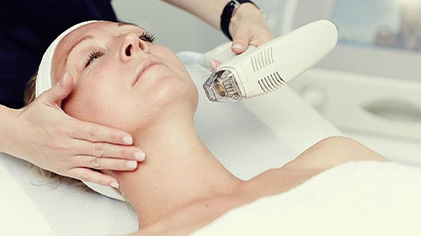
Laser Skin Services
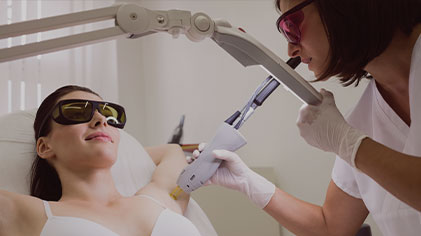
Laser Hair Removal
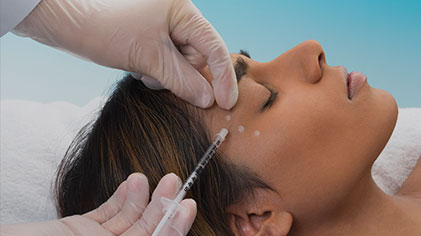
Botox

Facials
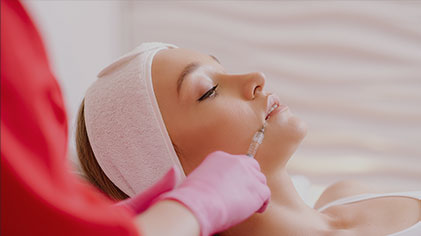
Dermal Fillers
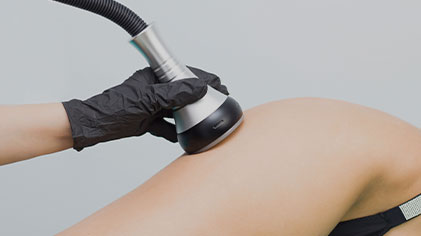
Body Sculpting
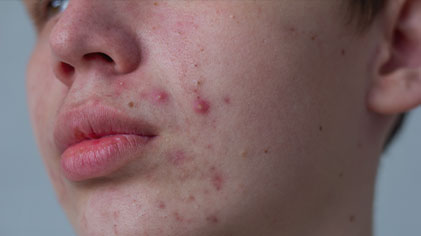
Services for Acne and Acne Scarring
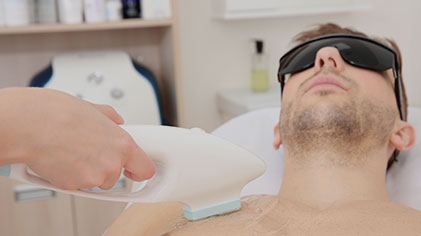
Men's Services
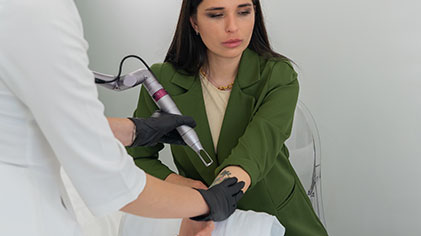
Tattoo Removal
For More Information, Call Us
 843-277-2240
843-277-2240
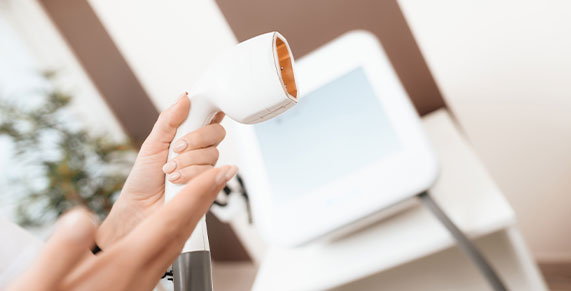
Innovative Laser Skin Services
in Cope, SC
If you have never had a laser skin treatment before, it might seem like a scary proposition at first. However, as many of our patients will tell you, procedures like laser hair removal can be life-changing. Laser skin services are not only effective - they're growing in popularity. According to a study, nearly 4.1 million laser skin services were performed in 2019. Whether you're looking to remove unwanted hair or achieve a more unified skin tone, laser services can help.
Some of the most requested laser skin services at Southern Cosmetic Laser include:
Laser Hair Removal in Cope, SC
Unwanted hair. You know it's there, and just about every day, you've got to shave, pluck, and tweeze your way to removing it. But what if we told you there was a permanent solution to reduce your unwanted hair problem?
At Southern Cosmetic Laser, our laser hair removal services target hair follicles giving your skin the smooth, silky feel you've may desire. Laser hair removal services save you time in shaving - a proposition that seemed impossible a few years ago.
Using the most up-to-date lasers for our services, we offer a permanent hair-reduction solution for all skin types, making it a quick, effective treatment for any ethnicity. Our state-of-the-art laser technologies emit a laser beam that penetrates your hair follicles, destroying the root while preserving your skin.
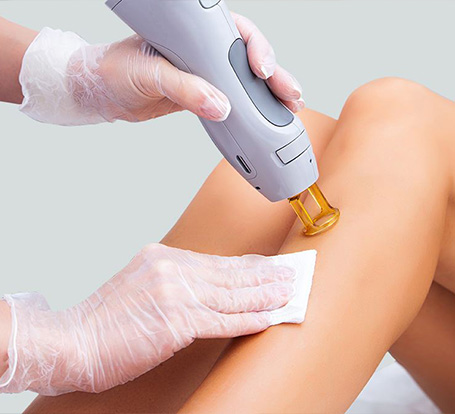
Our clients are ditching their razors and choosing our lasers to remove hair from their bikini lines, underarms,
upper lips, legs, arms, face, chest and back.
A few benefits of laser hair removal include:
- Eliminate Stubborn, Unwanted Hair
- Prevent Ingrown Hairs
- Quick and Effective
- Remove Bumps, Stubble, Irritation, and Razor Burn
- Smooth, Glassy Skin That You Will Love
- Affordable Plans from Southern Cosmetic Laser
If this is your first foray into laser hair removal services, you're probably wondering how it all works.
Don't worry; we've got you covered!
What is Laser Hair Removal?
Laser hair removal is a medical procedure that uses a laser, or concentrated beam of light, to remove unwanted hair on your body. During our laser hair removal services, the light from the laser is absorbed by the melanin in your hair. That light is then converted to heat, which damages your hair follicles, preventing future hair growth. Most laser hair removal services are quick and can be completed in about 30 minutes. This treatment can be accomplished during a lunch break or quickly after work.
What Happens During Laser Hair Removal Treatment?
Southern Cosmetic Laser hair removal involves several steps. Once you schedule an appointment, you will need to shave prior to your treatment. You will need to avoid plucking, waxing, threading and depilatory creams at least three weeks prior to treatment. During your day of treatment, the following will occur:
- Clean the treatment area to kill germs and bacteria
- Provide you with protective goggles or glasses to wear.
- Commence laser hair removal treatment using our cutting-edge lasers.
- A topical cooling product such as aloe may be applied after the treatment.
- Send you on your way feeling smooth and satisfied.
How Many Sessions Will I Need?
Services usually require an average of six to eight sessions with periodic touchups. However, sessions vary depending on your schedule and the area of your body that needs treatment. You may need more services on areas where hair grows quickly, like your upper lip. Some areas, like places on your back, will not require as many laser treatment sessions.
Skin Rejuvenation in Cope, SC
We offer the most advanced skin rejuvenation services for all skin types for both men and women. We believe in these 3 Basic Principles of Aging!
- Skin Integrity
- Toxins
- Dermal Fillers
At Southern Cosmetic Laser we can't turn back the hands of time, but we've seen by applying these three steps in a systematic approach you can achieve long lasting, amazing more youthful results. You may even have people say to you, "Wow, you look amazing! What's your secret?"
Natural aging and a lifetime of involuntary facial muscle actions contribute to the formation of tiny wrinkles, creases and fine lines that can make you look angry, tired or older than you feel. Over time skin loses volume, collagen and elastin and can become thinner and begin to sag.
At Southern Cosmetic Laser, our skin rejuvenation services are some of the most popular laser skin services offered. Skin rejuvenation is a non-surgical treatment that helps you look as vibrant as you feel. Unlike traditional cosmetic surgeries, proper skin rejuvenation doesn't require you to put your skin or health at risk to achieve beautiful results. Instead, our skin rejuvenation options are safe and offer multiple benefits for people suffering from skin defects like scarring, acne and aging.
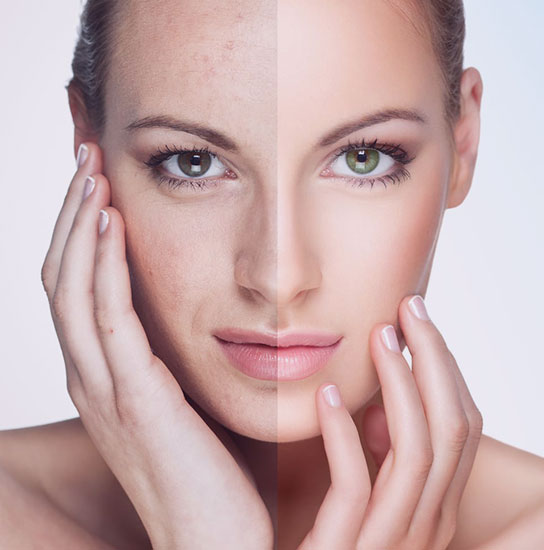
We can rejuvenate your skin using a variety of laser skin services in Cope, including resurfacing, energy-based laser tightening and lifting, and other laser-based services.
There are numerous benefits to skin rejuvenation, including:
- Reduction of Wrinkles & Fine Lines
- Diminished Sunspots
- Acne Suppression
- Improvement of Acne Scars
- Redness and Rosacea Relief
Contact our office today to learn which one of our cutting-edge skin rejuvenation services is best for your lifestyle.
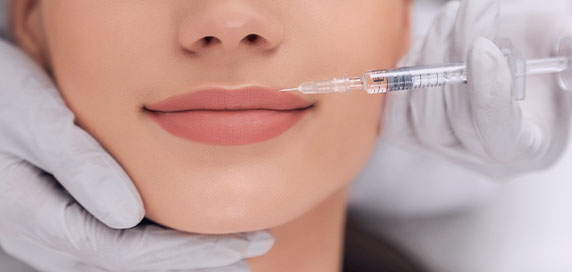
Skincare Injectables and Fillers
in Cope, SC
Dermal fillers have changed the face of the medical cosmetic industry. About 10 million dermal services are applied every year. Fillers are used in shaping the face, lifting, volumizing and minimizing wrinkles. Fillers replace fat and bone less, lift and support. When combined with laser skin services and neurotoxins our patients can stick to an easy regimen that helps them maintain gorgeous, smooth skin.
How Do Dermal Fillers Work?
Many of our patients know they want anti-aging services like fillers to help smooth out wrinkles and help lift. However, they don't know how dermal fillers, or injectables, work.
As people age, they lose collagen, elastin, and perhaps more importantly, hyaluronic acid. Hyaluronic acid helps retain moisture in your skin. Injectables that utilize hyaluronic acid and other substances help replace lost moisture, resulting in fuller, more radiant skin. Injectables and fillers can also help add extra volume to your lips and cheeks and firm up saggy skin.
Often, our patients see results after a single treatment, which can last as long as 9 to 18 months. Our patients choose Southern Cosmetic Laser because our fillers give a natural-looking result without affecting facial expressions, making for a discreet yet effective treatment.
Where Are Injectables Used?
We discuss and explain various types of fillers and decide which is best for you.
At Southern Cosmetic Laser, we offer personalized filler services for a number of problem areas, such as:
- Marionette Lines: These lines go directly down from the corners of your mouth and become more pronounced over time as your face loses volume.
- Cheeks: As you age, your cheeks lose volume, making you look gaunt and elderly. Our fillers plump up your cheeks, giving you a more youthful look without plastic surgery.
- Lips: Plumping up our patient's lips is one of our most popular injectable skincare services in Cope. Our lip filler services are customized to each patient's preference, meaning we can help with subtle enhancements or obvious upgrades.
- Jaw and jawline areas.
Anti-Aging Injectable Services in Cope, SC
Finding the right filler can be confusing, but our experienced medical team will work with you to discover the best treatment options for your goals. Some of our most popular injectable services include:
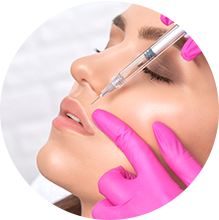
Dermal Fillers: Products such as Juvederm XC, Radiesse, Bellafill and Restylane are used for facial lifting and contouring. They are great for filling in thin lips, tightening saggy skin, helping with skin laxity, and more.
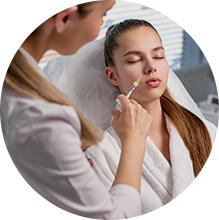
Botox: Botox and similar products like Jeuveau, Dysport, and Xeomin are wrinkle-smoothing neuromodulators that treat horizontal lines across the forehead. They are also very effective at reducing crow's feet and perpendicular frown lines between your eyebrows and other areas.
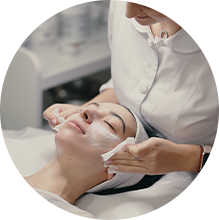
Nova Threads: This is another non-surgical option that can create an immediate facelift, which tightens and smooths your skin. Products like Nova Lyft and Nova Mesh are excellent if you have saggy skin, thin lips, or need collagen stimulation. We help you decided which is best for your face and skin type.

B12 Shots: B12 works wonderfully and promotes the growth of healthy skin cells, which repair damaged skin. Aging and certain medical conditions affect your body's ability to absorb B12, leaving you tired and forgetful. Regular B12 injections from Southern Cosmetic Laser help your body absorb the B12 it needs. That way, you're more alert during the day and benefit from healthier skin, nails, and hair.
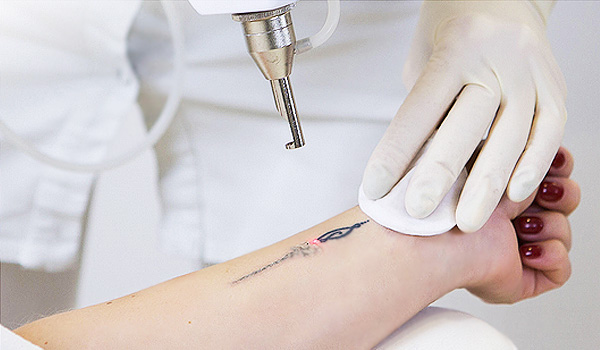
Laser Tattoo Removal in Cope, SC
Getting a tattoo is an art. Removing a tattoo is another art. There are numerous variables that are considered in laser tattoo removal. Southern Cosmetic Laser is compassionate in helping rid those unwanted tattoos. We use superior technologies to customize services for the patient and their tattoo. We work with clients to provide optimal outcomes at affordable, comparable pricing. We want to spend your money wisely and want to achieve the best outcome possible with minimal services.
Professional and Efficient from First Encounter
From anti-aging fillers for your lips to precise laser hair removal along your bikini line, Southern Cosmetic Laser has the team and tools to serve you with excellence. When it comes to cosmetic dermatology and medical aesthetics, we take pride in our experience and passion. We provide more than quick, effective services - we give our patients a relaxing, comforting experience catered to their needs. Our unparalleled customer service and state-of-the-art laser skin services in Cope, SC, keeps our clients coming back.
We know that aging is inevitable, but that doesn't mean you have to succumb to the aging process. Call or click today to learn more about the Southern Cosmetic Laser difference and how we have thrived for over 18 years as Cope's premier skincare and anti-aging treatment center.
 843-277-2240
843-277-2240
Book Appointment
Latest News in Cope, SC
Cope fighting to remain a town; population of 37 is too small to be SC municipality
Gene Zaleskihttps://thetandd.com/news/local/cope-fighting-to-remain-a-town-population-of-37-is-too-small-to-be-sc/article_738dc832-6c52-11ee-bb54-fb978efb8816.html
COPE – The Orangeburg County town of Cope has the unique distinction of having the smallest population of any incorporated town in South Carolina, according to the 2020 United States Census.The 2020 census reported the town's population as 37, a decline of 77 from the 2010 census.The small population was not much of an issue until Oct. 4, when S.C. Secretary of State Mark Hammond sent Mayor Janet Joye a letter warning her that the town would be disincorporated since the population fell below 50.Hammond’s noti...
COPE – The Orangeburg County town of Cope has the unique distinction of having the smallest population of any incorporated town in South Carolina, according to the 2020 United States Census.
The 2020 census reported the town's population as 37, a decline of 77 from the 2010 census.
The small population was not much of an issue until Oct. 4, when S.C. Secretary of State Mark Hammond sent Mayor Janet Joye a letter warning her that the town would be disincorporated since the population fell below 50.
Hammond’s notice followed a letter his office received from the S.C. Revenue and Fiscal Affairs Office. The letter notes the town's “certificate of municipality must be automatically forfeited and void” as part of the state's 1962 disincorporation law.
The law states “when following its incorporation a municipality’s population has decreased to less than fifty inhabitants, the certificate of the municipality must be automatically forfeited and void.”
The Town of Cope is challenging census numbers showing it only has 37 residents, which falls below the threshold needed to remain a town in So…
Because the law does not specify how the population should be measured or the process used to forfeit the incorporation, the town immediately challenged the census count and the threat of disincorporation by conducting a face-to-face count of individuals living inside the city limits.
This effort resulted in a population count of 61 people, above the 50 required to remain incorporated.
The Secretary of State's office confirmed Oct. 18 that it received updated information from the town and has begun the process of verifying the addresses provided with Revenue and Fiscal Affairs to determine if the individuals do in fact live within the town limits.
Gas pump at Vallentine's Gin and Store in Cope.
As of Oct. 23, the office was still awaiting verification that the addresses provided are within the town limits of Cope, according to the office's general counsel and Public Information Director Shannon Wiley.
Once that information is received, Joye will provide an affidavit that affirms the information on the residents living at those addresses is correct.
The Secretary of State's Office is holding off on officially disincorporating the town until population numbers are verified.
Mayoral candidate William Workman IV says he fully expects to maintain the town's status.
“We don't want to be taken over by the county,” Workman said. “We prefer to take care of our own business.”
Joye could not be reached for comment.
Cope resident and Cope Baptist Church pastor Anthony Day said he is happy the town will remain incorporated.
“Not being unincorporated is a good thing. As a town, I think it helps us out a little bit, but if it does ever eventually become unincorporated, we will have to cross that bridge when we get there,” Day said.
He does not feel like he is lacking for services despite Cope's size.
“The town does a great job of keeping the small town vibe,” Day continued. “I think that is what a lot of these residents enjoy. The small town vibe of Cope. I think that is why people still live here. You don't deal with the city traffic. You don't deal with the city problems.”
“You deal with the small town,” Day continued. “Everybody knows everybody and when things take place, your neighbors are there to help you as well.”
“The fire department is only, what, a half a mile from the actual town itself,” Day said. “We have a great volunteer fire department – very fast to react when things are taking place.”
“On paper it may look like we are slowly fading away, but in real life we are here,” Day said.
Senator acts
The threat of disincorporation caught the attention of Sen. Vernon Stephens, D-Bowman.
Stephens sent the Secretary of State's office a letter on Oct. 13 informing them about the town's efforts to rectify the situation.
Stephens said he felt like he needed to get involved because he represents the town and was informed of the state law.
He spoke with town council members, Orangeburg County administration, the Lower Savannah Council of Governments, the Municipal Association of South Carolina and the Orangeburg County Voter Registration and Elections Office and all seemed to be OK with the town still being in existence.
“It was my responsibility to initiate and try to rectify the situation,” Stephens said.
Stephens said he hand-delivered the letter to the Secretary of State's office.
“The lack of individuals goes back to the census and individuals not filling out the census,” Stephens said. “We have a substantial undercount in Orangeburg County and most rural counties have such.”
Stephens is confident the face-to-face count is accurate and will save the Town of Cope.
“We made sure all our i’s were dotted and t’s crossed,” Stephens said. He asked the Secretary of State to expedite a decision on the matter.
“Time is of the essence as it is the season for setting millage rates and for preparing for elections,” Stephens wrote.
Unchartered territory
Cope is in some relatively unchartered territory if it does in fact become disincorporated.
Wiley said she could not answer questions related to what will happen to services the town provides for its residents, what will happen with the taxes collected, or what role the state will play in helping the town.
“There is little to no statutory guidance on this,” Wiley sad. “Also, the Secretary of State’s Office does not have the statutory authority to ‘wind up’ a town or dispose of its assets or liabilities.”
Cope is not alone in seeing its incorporation status threatened.
Jenkinsville in Fairfield County has a population of 40. There were 46 living in the town during the 2010 census. The town also got a letter of warning about its incorporation status.
Cope and Jenkinsville may not be the only towns to have their incorporation status in jeopardy over the coming decades.
Population trends show the state's urban areas are growing while its rural areas are hemorrhaging population.
Currently, South Carolina has about 271 towns and cities and 14 have less than 100 people.
Govan in Bamberg County is the fifth least-populated town in the state with only 56 people, according to the 2020 census. The town's population at the 2010 census was 65.
In Govan’s 2021 election, Wilma Edmonds received all 12 cast votes. There were no other candidates running for the position and no write-in votes.
The other council members also each received 12 votes and none was opposed.
Edmonds could not be reached for comment.
According to the Secretary of State's office, Cope and Jenkinsville will be the first towns in decades to be forced to surrender their incorporation because the population dropped below 50.
“Our office does not have records indicating that a town in Orangeburg, Calhoun or Bamberg counties has had its charter forfeited and voided due to a drop in population,” Wiley said. “The towns that have lost their municipal charter based on a population decrease have been in other counties (McCormick, Aiken, Darlington, Marion and Allendale).”
Cope's governing body
Cope's five-member town council currently meets quarterly and deals with business such as organizing an annual Christmas parade.
Otherwise, its responsibilities are few.
Workman IV says the town has enough of a tax base to provide for its residents despite its small size.
“We keep the town clean, we cut the grass,” he said. “We keep the parks up, the basketball court and the tennis courts up.”
The town receives its electricity from Dominion Energy, its water from the Orangeburg Department of Public Utilities and its gas from Bamberg. Police protection is from the Orangeburg County Sheriff's Office and the S.C. Highway Patrol, and fire protection is from the Orangeburg County Fire District.
The town also has Internet access with AT&T.
The town has used state funds to help build parks and a walking trail.
The state provides funding for towns and cities through the Local Government Fund, but that funding is based on population or the local share of taxes collected on specific businesses.
Cope is expected to receive less than $1,000 from the state as part of the Local Government Fund.
Joye has been mayor since 1992 but did not file for re-election this year. Workman IV is the only one to file for the seat.
Marlene, Workman's wife, has filed for re-election to town council. Workman's son, Billy Workman V, has also filed for election to council.
Two of the other council seats are filled by husband and wife Darren and Jean-Marie Jump.
The couple also did not file for re-election but are running as write-in candidates.
If all the seats are not filled, a special election will be held to fill the vacant seats, according to Orangeburg County Voter Registration and Elections Director Aurora Smalls.
Cope
The Town of Cope used to be more populated back in the day.
According to the historical census population data, the town had 280 residents in 1940. This was the high-water mark, population-wise.
In addition to a small population, Cope is also small in size. The town is only half a square mile.
The Town of Cope was named for Jacob Martin Cope, who sold a portion of his land in the 1890s to be used for the town and train depot.
The Manchester and August Railroad was established in 1894 (the same year the town was established) and the tracks were later used by the Atlantic Coast Line Railroad.
The railroad brought commerce and people to Cope.
In a few years, the town had two churches, general stores such as the Vallentines Store, a grist mill and a cotton gin, according to historical archives.
The town stopped being a railroad stop in the 1960s.
Today, Cope has no retail businesses aside from a small post office.
The rail line running through town carries only coal for Dominion Energy's power plant and many of the buildings in the center of town are empty reminders of what Cope once had — a bank, a general store and a phone company.
The Small Town In South Carolina You’ve Never Heard Of But Will Fall In Love With
Robin Jarvishttps://www.onlyinyourstate.com/south-carolina/cope-sc-town-you-have-never-heard-of/
South Carolina is certainly filled with special, unique towns. From the Lowcountry to the Midlands, there are so many places to explore and enjoy. Each one is great, but the smaller ones offer a little something extra. One great example is located in Orangeburg County and you’ll definitely want to visit. This tiny little incorporated town shows us that growth isn’t what makes a town desirable, and that bigger ...
South Carolina is certainly filled with special, unique towns. From the Lowcountry to the Midlands, there are so many places to explore and enjoy. Each one is great, but the smaller ones offer a little something extra. One great example is located in Orangeburg County and you’ll definitely want to visit. This tiny little incorporated town shows us that growth isn’t what makes a town desirable, and that bigger isn’t better. In fact, you may be surprised to learn that one of the smallest towns in the Palmetto State is also one of the most picturesque. There are so many things to do in Cope, South Carolina that a long weekend is probably in order.
Have you heard of Cope, or visited? We’d love to know about your experience. And, if you have any fun tips to make a visit extra special, we’d love to read about them in the comments.
Love exploring the tiny little towns in the Palmetto State? Check out this tiny town where you’ll never run out of things to do.
More to Explore
Michelle S. | March 19, 2023
Are there any covered bridges in South Carolina?
There are quite a few covered bridges in South Carolina worth visiting. Poinsett Bridge, linking Charleston to Saluda, isn't exactly a covered bridge, but it's worth a visit. This structure built in 1820 is the oldest stone bridge in the entire Southeast. It's also considered to be remarkably haunted. Another option is Campbells Covered Bridge, near Landrum. Built in 1909, this is the oldest covered bridge in South Carolina. Here are a few reasons it's worth putting on your must-see list.
Which hidden gems in South Carolina should I visit?
The best hidden gems in South Carolina offer an opportunity to enjoy local attractions, nature, and everything in between. Here are a few particularly great ones:
There are quite a few great places to enjoy in South Carolina. For more of the lesser-known spots, check out this fun road trip.
$70M solar farm planned; construction starts in Cope in 2025
Gene Zaleskihttps://thetandd.com/news/local/70m-solar-farm-planned-construction-starts-in-cope-in-2025/article_91fa2b6d-ac1a-5bae-b6d7-0ff8683ee743.html
May Renewables LLC is planning to build a $70 million solar farm and storage facility near Cope in Orangeburg County.The facility will have a 100 megawatt solar farm. It will include a 100 megawatt/400 megawatt battery energy storage system, Beaufort Rosemary LLC Managing Director Kevin Casey said.“Solar photovoltaic and energy storage systems are growing significantly around the globe, in the U.S. and in South Carolina, because of their zero-greenhouse gas emissions profile and their relatively low cost in producing elec...
May Renewables LLC is planning to build a $70 million solar farm and storage facility near Cope in Orangeburg County.
The facility will have a 100 megawatt solar farm. It will include a 100 megawatt/400 megawatt battery energy storage system, Beaufort Rosemary LLC Managing Director Kevin Casey said.
“Solar photovoltaic and energy storage systems are growing significantly around the globe, in the U.S. and in South Carolina, because of their zero-greenhouse gas emissions profile and their relatively low cost in producing electricity,” Casey said.
“Utility and corporate buyers are increasingly seeking to procure electricity from solar ... and more recently from energy storage facilities, to meet environmental, social and governance demands of their customers and shareholders. This facility responds to these market demands,” he said.
The farm and storage facility will be built on land located along U.S. Highway 301, also known as Bamberg Road, approximately two miles north of Cope near Carver School Road.
The solar farm will be built on 500 acres, and the integrated battery storage facility will occupy approximately 25 acres.
Construction is expected to start in the latter half of 2025 and commercial operation will begin by the end of 2026, Casey said.
The company is not anticipating the creation of new, ongoing jobs as a result of the project. Construction and maintenance jobs will be connected to the project.
May Renewables is owned by Renewco Power Holdings LLC. Beaufort Rosemary is the project developer.
Casey said there are over 6,000 major solar facilities and over 600 major battery energy storage facilities in the U.S.
There are already some operational projects in Orangeburg County, including the 75-megawatt Orangeburg County Solar Project, LLC owned by Savion, LLC. There are also other projects in active development in Orangeburg County.
Casey said, “We also view South Carolina and Orangeburg County as great places to do business.”
Casey explained how the solar farm and storage facility process works.
“Solar photovoltaic cells generate electricity by absorbing sunlight and using that light energy to create an electrical current,” Casey explained.
“There are many cells in a single solar panel, and many panels are linked together at an inverter which converts direct current (DC) output from the solar panels into the alternating current (AC) used in our homes,” Casey continued.
“The inverters feed the aggregated electricity to a step-up transformer in an electrical substation which, in the case of the May project, will step up the voltage to the 230 kilovolt transmission line adjacent to the project and which feeds the electrical grid serving homes and businesses,” he said.
The storage facility “typically looks like a series of containers slightly smaller than a trailer on a semi-truck,” he said. “Each container sits on a foundation. They are electrically wired together and are operated through an energy management system (aka a computer).”
According to the U.S. Department of Energy's Office of Efficiency and Renewable Energy's website, storage refers to technologies that can capture electricity, store it as another form of energy and then release it for use when it is needed.
Storage helps solar contribute to the electricity supply even when the sun isn’t shining.
Casey said the project’s electricity will go to the transmission grids of Dominion Energy South Carolina, Santee Cooper or Central Electric and then flow to serve homes and businesses.
Orangeburg County has provided incentives for the company. The incentives are designed to reduce the property taxes the industry will have to pay.
Gamecocks Welcome Nikita Cope to Carolina Family
University of South Carolina Athleticshttps://gamecocksonline.com/news/2016/11/10/gamecocks-welcome-nikita-cope-to-carolina-family/
Select Sport All sports Baseball Beach Volleyball Equestrian Football Men's Basketball Men's Golf Men's Soccer Men's Swimming and Diving Men's Tennis Men's Track and Field Softball Swimming and Diving Track and Field Women's Basketball Women's Cross Country Women's Golf Women's Soccer Women's Swimming and Diving Women's Tennis Women's Track and Field Women's VolleyballThu, Apr 13 / Final#2 Auburn13 #7...
Select Sport All sports Baseball Beach Volleyball Equestrian Football Men's Basketball Men's Golf Men's Soccer Men's Swimming and Diving Men's Tennis Men's Track and Field Softball Swimming and Diving Track and Field Women's Basketball Women's Cross Country Women's Golf Women's Soccer Women's Swimming and Diving Women's Tennis Women's Track and Field Women's Volleyball
Thu, Apr 13 / Final
#2 Auburn
13
neutral
Fri, Sep 22 / Final
#9 UC Davis
8
home
Fri, Sep 29 / Final
#10 UT Martin
4
home
Fri, Sep 29 / Final
Lynchburg (JS Only)
0
home
Fri, Oct 6 / Final
SDSU
8
away
Fri, Oct 6 / Final
Fresno State
4
neutral
Fri, Oct 13 / Final
#7 Georgia
15
away
Fri, Oct 27 / Final
#2 Auburn
14
away
Fri, Nov 3 / Final
#4 Texas A&M
10
home
Fri, Nov 3 / Final
College of Charleston (JS Only)
2
home
Fri, Nov 17 / Final
Oklahoma State
8
Equestrian 12
home
Sat, Feb 3 / Final
#4 Auburn
9
home
Fri, Feb 9 / Final
#1 TCU
13
away
Sat, Feb 10 / Final
#2 Texas A&M
11
away
Sat, Feb 24 / Final
#5 Georgia
11
home
Fri, Mar 1 / Final
SDSU
3
home
Fri, Mar 29 / Final
#3 Texas A&M
14
neutral
Sat, Mar 30 / Final
#4 Georgia
12
neutral
Thu, Apr 18 / Final
#2 SMU
13
neutral
Equestrian . November 10, 2016
Related stories
'No time to lose': SC adopts first climate resilience plan to cope with stronger storms
Clare Fieselerhttps://www.postandcourier.com/hurricanewire/no-time-to-lose-sc-adopts-first-climate-resilience-plan-to-cope-with-stronger-storms/article_b8f7dae8-1b5d-11ee-ad7a-e385fff7dd28.html
COLUMBIA – Gov. Henry McMaster and administration officials announced a long-awaited plan to respond to the impact of climate change on a growing population. Released June 29, the plan focuses on beefing up the state’s data collection efforts and conserving the state’s natural defenses against rising seas and stronger storms.The hefty report, which runs 746 pages and contains more than 50 recommendations, focuses on better data collection ef...
COLUMBIA – Gov. Henry McMaster and administration officials announced a long-awaited plan to respond to the impact of climate change on a growing population. Released June 29, the plan focuses on beefing up the state’s data collection efforts and conserving the state’s natural defenses against rising seas and stronger storms.
The hefty report, which runs 746 pages and contains more than 50 recommendations, focuses on better data collection efforts, mitigating flooding by conserving natural environments like swamps and forests and encouraging local governments to introduce regulations that reduce risky development in flood-prone areas.
The new effort is the direct work of the state's Office of Resilience, a cabinet agency that was created in 2021. Building resilience to increasingly strong storms is an ambitious goal for a new agency. The question remains: what will change for communities most affected by hurricanes?
A new focus on anticipating storm impacts is one of them.
"This work and our history is very tied to hurricanes," said Carissa Cochrane, the communications director for the South Carolina Office of Resilience. The predecessor of her current office was a temporary agency that went by another name — the South Carolina Disaster Recovery Office — which was formed in 2015 during the aftermath of Hurricane Joaquin.
Cochrane said the term "resilience" came to the forefront in the years the temporary agency was responding to Joaquin and later on hurricanes Matthew and Florence. In addressing hurricane recovery, she said, the state realized it needed to do a better job at collecting data, anticipating flood waters, increasing community awareness and safeguarding protective area that already exist.
They also were intentional about defining what resilience means for South Carolina.
"We define resilience as the ability of communities, economies and ecosystems to anticipate, absorb, recover and thrive when presented with environmental changes and natural hazards," said Cochrane.
One of the visible changes that coastal communities can expect as a result of the plan is a new flood hazard signage program. This will provide road signs that point out the high water mark in places with high storm surge. The height of the sign will be the height of high water mark, said Cochrane, and will help increase public awareness of hazard areas.
Another visible outcome will be the conservation of undeveloped natural areas, like coastal wetlands and forests, that already provide flood protection and mitigation.
The resilience office plans to hold public meetings within the state's eight watersheds to get local input on which areas should be prioritized for conservation and other resilience planning decisions. At the beginning of 2023, the office received a grant from the National Fish and Wildlife Federation to hold a series of public meetings in the Salkehatchie River Basin. Cochrane said that could be a model to replicate in the state's seven other watersheds.
Coastal communities will not see these new flood signs or conserved areas pop up any time this year. Those projects will take time to roll out.
But state officials and the governor insisted that plan will provide an immediate benefit for this year's hurricane season: a much expanded effort to collect better data on flooding and flooded communities.
"Our state has a lot of water," McMaster told the press. Mostly, that’s a good thing, he said. "But we will have a problem if we don’t take the steps to find out what water we have, where we have it, when we have it."
The state's resilience plan is backed up some $200 million in funding McMaster secured from the legislature in this year’s budget negotiations for resiliency efforts.
The office also hopes to move quickly to drastically increase the number of weather stations and river and groundwater monitors around the state. The move will improve understanding of water patterns and how they’re changing, as well as improve the state’s ability to adapt and predict, said Alex Butler, the Office’s Resilience Planning Director, who led the creation of the report.
For instance, recent studies have shown that not only are South Carolina’s tides rising with climate change, the state’s coast is sinking, Butler said. But there aren’t any on-the-ground sensors measuring the phenomenon. It was discovered through remote sensing, which is often done with aerial or satellite observation, he said. The office hopes to change that, and fast.
Finally, the state hopes to use education, outreach and encouragement to local communities to introduce more stringent building regulations to ensure more homes and businesses aren’t built in risky areas. Butler said the office also hopes to create a “pre-disaster buyout” program that would offer cash to homeowners in flood-prone regions to move out before catastrophes. The current program only buys out homeowners after storms.
The resilience office intends to take the new plan on a statewide “road show” in the coming months to coordinate with local officials and watershed districts, Butler said.
The strategy offers another view of McMaster’s approach to climate change, which none of the speakers mentioned directly during the announcement.
McMaster has focused on adapting the state to climate change with a strong emphasis on conservation, while efforts to stem carbon emissions are not directly mentioned. Yet, McMaster has become a national leader on promoting electric vehicles and hosted a recent energy summit in Columbia that featured significant discussion of nuclear technology.
The resilience report itself contains myriad references to climate change and climate science.
“Here in South Carolina under the governor’s leadership, we’ve been able to dispel that you have to choose between economic and environmental sustainability,” Tom Mullikin, the former chairman of the S.C. Floodwater Commission and who has been deeply involved in shaping the state’s resilience policy, said June 29.
South Carolina is the second to last state on the Eastern Seaboard to adopt a resilience plan. But Ben Duncan, the state's chief resilience officer, stressed that they have been working on many of the initiatives outlined in the report since the office was founded in 2020.
"Every state has taken this differently. I wouldn’t say we’re late to the party, but … certainly there’s no time to lose," Butler said.
Hurricane Wire is a pop-up newsletter during hurricane season that delivers anyone who lives on the East Coast all the information they need to know as storms brew in the Atlantic and beyond.
Disclaimer:

